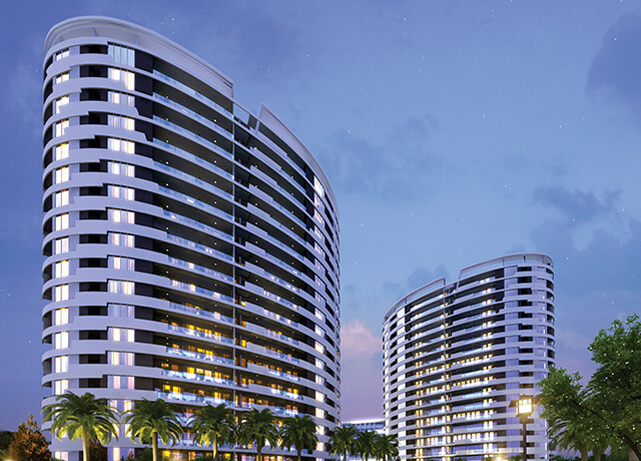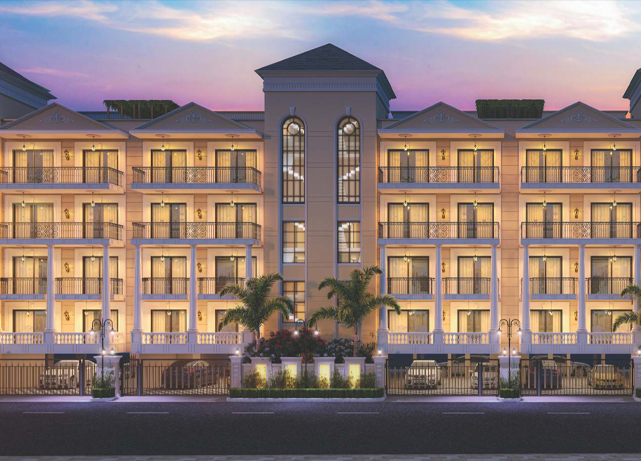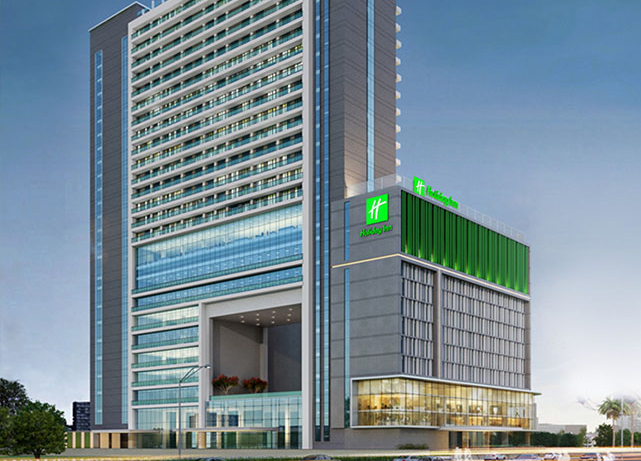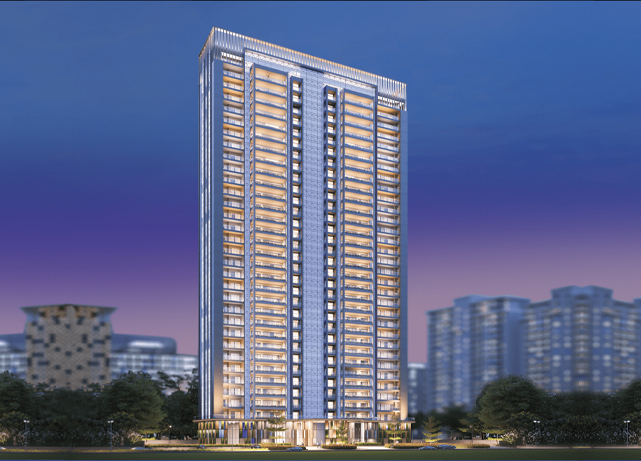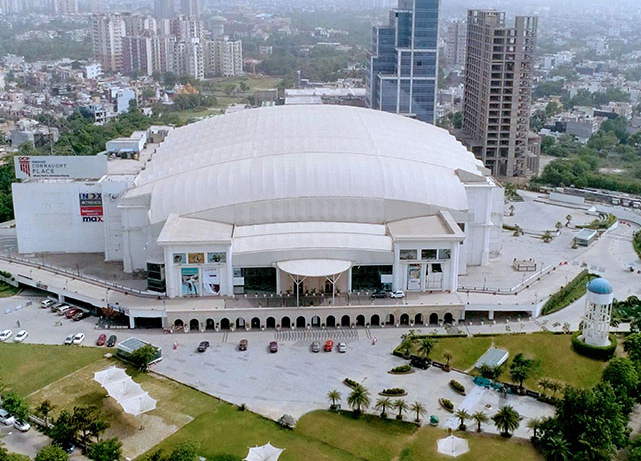Indian Real Estate - A goldmine for NRI Investors
The Indian real estate market growth is supported by a strong economy, rapidly developing infrastructure and a vibrant tourism and startup ecosystem. The average monthly consumption of Indian households has increased by 33% over the last decade, indicating a robust economy. India's real estate market offers a safe investment bet boosted by the overall macro factors.
Growth Rates and Forecasts in Commercial and Residential Real Estate
- The commercial Real Estate Market size is currently sitting at USD 40.71 billion which is expected to grow to USD 106.05 billion by 2029, a CAGR of 21.10%.
- Delhi-NCR recorded 6% growth in housing sales with average housing prices across the seven major cities grew 11 per cent annually.
- While global real estate growth rate forecasts a CAGR 5.20% during the period 2024-2031.
- The average growth rate in residential remained robust with an increase of 32.85% across the 7 cities in 2023 as compared to 2022.

Be a Part of India's Growth Story
Forecast suggests that the country's economy could reach 5 trillion dollars by 2027, becoming the third largest in the world.
Bolstered by a demographic dividend, better currency stability, strengthened institutions and robust infrastructure, the world is looking towards India.
Flexible office spaces saw a combined lease of 64,100 seats, registering an increase of 47.1% from the 4th quarter of 2022 to the 4th quarter 2023.
The Gross office leasing hit an all time high of 20.94 mn sq ft in Q4 of 2023 while reaching 62.98 mn sq ft., a significant 26.4% y-o-y increase.
The net office space absorption rate in top 7 cities amounted to 16.01 mn sq ft, in Q4 2023 exceeding the previous high of 14.09 mn sq ft in Q4 2019.
Mumbai registered a rental growth rate of 3% while Delhi NCR saw a rental growth rate of 2.2% in 2023 when compared to 2022.
Why Invest in Omaxe?
Omaxe Ltd. has got a proven track record of 36 years in real estate in the country. With a marked presence in 8 states and 31 cities, it has delivered a remarkable 12.62 million square meter across residential, commercial, Integrated townships and hospitality spaces. The conglomerate also has a distinct advantage of having a broad footprint in Tier 2 and Tier 3 cities which are coming up as the new growth engines of the country.
Top Residential and Commercial properties for NRIs in India
India is a key player in the global real estate market. Due to increased urbanisation, it has become a hub for high-profile NRIs (Non-Resident Indians) to explore diverse investment options among residential properties as it also ensures lucrative Return on Investment (ROI) possibilities.
Want to explore the possibilities?
Fill in the form below to consult our experts for the best available investment options.
Frequently Asked Question?
When investing in real estate, it's crucial to consider several factors to ensure a successful investment. Firstly, opt for an A-list developer with a strong reputation in the industry. Assess the developer's delivery history to gauge their reliability and commitment to timely project completion. Additionally, consider the developer's legacy, market share, and presence in the market, as these factors can indicate stability and reliability. Be cautious of fly-by-night operators offering tempting discounts and unrealistic returns, as these could be potential traps leading to investment pitfalls.
When considering real estate investments, NRIs should carefully evaluate which segment aligns best with their financial goals and risk tolerance. Commercial real estate presents an attractive option due to its potential for long-term high returns and appreciation. Additionally, commercial properties typically boast high resale values and experience fewer disputes compared to residential properties. Moreover, there's often more flexibility for negotiation on rates in the commercial real estate market. Furthermore, the influx of institutional investor funds into commercial properties reduces the likelihood of delays in projects, making it a favorable choice for NRIs seeking stable investments.
Several cities in India have given promising returns on real estate investments for various reasons in the past. Delhi-NCR stands out due to its combination of low supply and high demand, driving property values up. Investing in commercial properties near metros, like in Delhi, ensures good returns due to high foot traffic and accessibility. Cities with a large and stable employer base, such as Bangalore and Hyderabad, provide stability and consistent demand for both residential and commercial properties. Tier 2 cities like Faridabad, Ludhiana, New Chandigarh, Prayagraj etc. are emerging as lucrative markets, offering affordable options with improving infrastructure and increasing job opportunities, attracting both investors and residents alike. Additionally, government initiatives aimed at creating business and trade centers in Tier 2 cities further boost investment prospects by stimulating economic growth and development.
Investing in real estate is particularly advantageous at the present moment for several reasons. Firstly, the weakness of the rupee enhances the purchasing power of investors, making real estate more affordable. Secondly, loan rates are currently at their lowest point in fifteen years, facilitating easier access to financing for potential buyers. Moreover, alternative investment options such as fixed deposits offer lower returns, and the stock market's instability makes real estate a more attractive and stable investment avenue. Additionally, with expectations of a rapid recovery in the Indian market, investing now could potentially yield significant returns in the future. Lastly, partnering with reputable developers at this opportune time ensures that investments are made wisely, maximizing the potential for long-term gains.
Investing in real estate in tier 2 and tier 3 cities presents a lucrative opportunity for several reasons. Firstly, these cities are considered emerging markets, offering substantial growth potential for investors. Rental rate differentials in these cities compared to metros are significant, providing attractive rental yields for property owners. Additionally, the shift towards remote work due to trends like work from home has increased the demand for larger homes in these cities, further driving up property values. Evaluating builders based on their post-delivery services, especially during the challenges posed by the Covid pandemic, ensures a reliable investment. Moreover, the rising demand for rented homes in tier 2 and tier 3 cities offers a steady income stream for investors. Lastly, government initiatives aimed at creating business and trade centers in these cities contribute to their economic growth and make them desirable destinations for real estate investment.
Integrated townships have emerged as one of the most sought-after segments in real estate for several compelling reasons. Firstly, these townships are typically spread across a large area, offering residents spacious and de-densified living environments, which have become increasingly desirable in the wake of recent global events. Moreover, integrated townships often boast ample green spaces, promoting a healthy and sustainable lifestyle. Safety and security are prioritized within these communities, providing residents with peace of mind. Additionally, integrated townships are designed to offer all necessary amenities and conveniences within close proximity, eliminating the need for residents to travel far for daily needs. The growing demand for larger homes is effectively met by the spacious layouts often found in integrated townships. Furthermore, these communities foster a walk-to-work/entertainment culture, promoting a sense of community and enhancing overall quality of life for residents.
To propel real estate growth and stimulate the Indian economy, several policy changes can be implemented. Firstly, recognizing the significant multiplier effect of the real estate sector is crucial. Drawing inspiration from successful models in countries like China or Singapore, where housing has been pivotal in driving sectoral growth, can inform effective strategies. Additionally, providing incentives such as tax breaks, affordable land, and fiscal and monetary support can encourage investment in the real estate market. Streamlining administrative processes through initiatives like single-window clearance can expedite project approvals and promote development. In the short term, reducing GST on commercial properties can spur demand and activity in the sector. Furthermore, allowing foreign direct investment (FDI) and lowering registry rates can attract more investors and homebuyers, stimulating growth and revitalizing the real estate market.
When considering monthly rental income, investing in commercial properties tends to be preferable for several reasons. Firstly, the return on investment (ROI) is typically higher compared to residential properties, often averaging around 2% annually or more. Additionally, commercial properties generally entail lower furnishing and maintenance costs compared to residential units, thereby maximizing profit margins for landlords. Furthermore, commercial properties often boast high resale values, providing additional avenues for potential profit in the long run.
Non-Resident Indians (NRIs) are recognized under the Foreign Exchange Regulation Act, 1973. Every bank and housing finance company follows the RBI guidelines to define an NRI - "An Indian citizen who holds a valid document like an Indian passport and stays abroad for employment or for carrying on business or vocation outside India or stays abroad under circumstances indicating an intention to stay there for an uncertain duration is an NRI."
Documents required for Resident Indians and NRIs for getting home loans are different in some respects. Home loans for an NRI are available for construction of new houses/ flats, purchase of old house/ flat addition/ alteration to an existing house and repairs/ renovation etc. However, for availing home loans, an NRI have to fulfill certain conditions, according to the provisions of the Income Tax Act. They should have stayed in India for a period of 182 days or more within an assessment year or they should have stayed in India for at least a total of one year or more.
Last but not the least, NRIs should take due care while selecting their home loan provider companies or HFCs. Considering the geographical distances involved, it is significant that loan seekers associate with a proactive and responsive HFC.
Eligibility criteria for NRIs differ from Resident Indians based on several parameters:
- Age: The loan applicant must be at least 21 years old.
- Qualification: The NRI loan seeker must be a graduate.
- Income: The applicant must have a minimum monthly income of $2,000 (this may vary across Housing Finance Companies - HFCs). Eligibility is also determined by the stability and continuity of employment or business.
- Payment options: The NRI must route EMI through their NRE/NRO account and cannot make payments from other sources, such as a savings account in India.
- Number of Dependents: Eligibility is also determined by the number of dependents, assets, and liabilities.
NRI home loans range from a minimum of INR 5 Lakh to a maximum of INR 1 Crore, based on repayment capacity and the property's cost. The applicant can be eligible for:
- A maximum of 85% of the cost of the property or construction.
- 75% of the cost of land in case of land purchase.
- These percentages are based on the repayment capacity of the borrower.
The eligibility can be enhanced by applying for home loans with a co-applicant who has a separate source of income. Also, the interest rate for NRI home loans is typically 0.25% - 0.50% higher than for Resident Indians. Some HFCs have a 'negative criteria' for NRI home loans, making it difficult for NRIs from certain locations to get a home loan.
- PAN Card (Permanent Account Number)
- OCI/PIO Card (In case of OCI / PIO)
- Passport (in case of NRI)
- Passport size photographs
- Address Proof
If the PIO card is not available, photocopies of any of the following documents:
- The current passport with birthplace as 'INDIA'
- Indian passport, if held by the individual earlier
- Parent's/Grandparent's Indian passport/ Birth Certificate/ Marriage Certificate substantiating the individuals claim as a person of Indian origin.
SALES ENQUIRIES
- Call :
-
Timing :
10 AM to 6 PM IST
OMAXE CARE FOR NRIs
- Toll Free :
-
Timing :
10 AM to 6 PM IST
- Email:




























